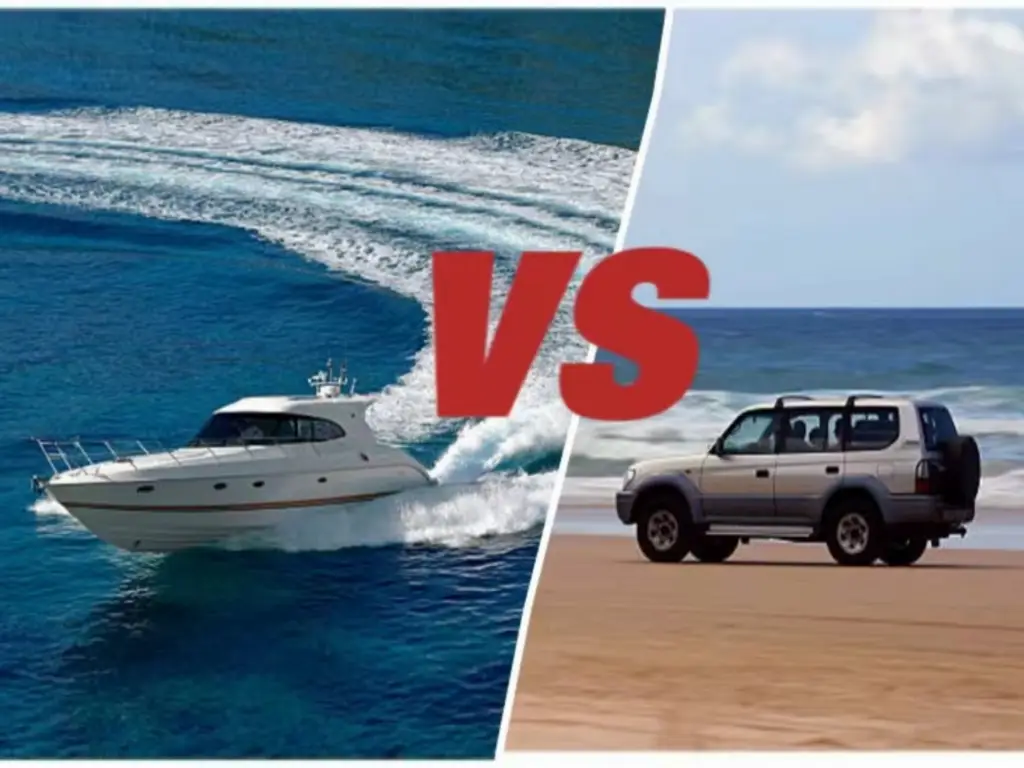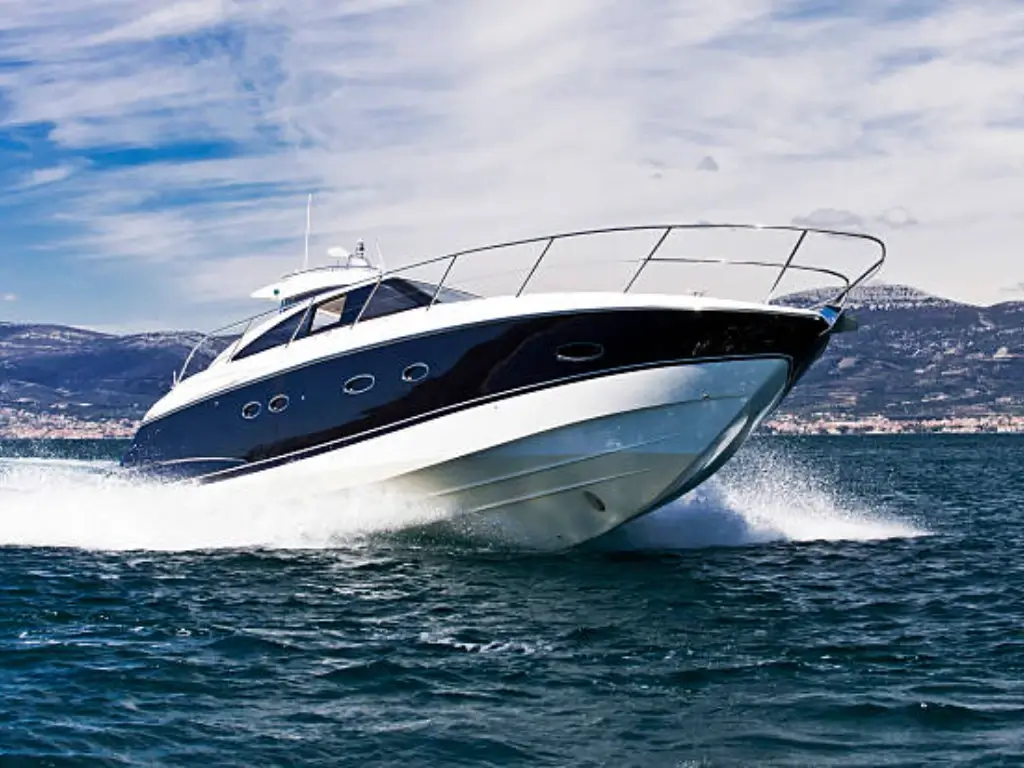Introduction to Marine and Car Batteries
Have you ever contemplated the silent yet formidable force that initiates your car’s ignition every morning or sustains your vessel’s seamless operation across tranquil waters? This force is the unheralded battery, a linchpin in our daily voyages of discovery. Today, we embark on an exploratory odyssey to demystify the intricacies and wonders of two distinct battery categories: marine and car batteries. At first glance, they may appear analogous, yet these power sources are as divergent as the applications they energize.
Marine batteries are meticulously crafted for nautical exigencies, designed to withstand the arduous conditions of maritime environments. Their role transcends mere engine activation; they also supply energy to an array of marine apparatuses. Conversely, car batteries stand as the bulwarks of terrestrial transportation, engineered to invigorate your vehicle’s engine and ensure its consistent, smooth operation. Together, let us navigate through the fascinating realm of these two battery archetypes, dissecting their enigmatic attributes and discerning the unique factors that tailor each to its specific operational milieu.

What is a Marine Battery?
Marine batteries, encompassing varieties such as deep cycle batteries and those rated in marine cranking amps (MCA), are meticulously engineered to meet the rigorous demands of maritime environments. These units extend beyond the mere initiation of a boat’s engine; they are integral in energizing an extensive array of onboard accessories, including sophisticated gauges and illumination systems. Their suitability for nautical usage is largely attributed to their robust construction, meticulously designed to counter the relentless jostling and vigorous oscillations inherent in traversing turbulent waters.
An in-depth examination of marine batteries unveils their dual purpose functionality. Primarily, they exhibit proficiency in swiftly igniting boat engines, a process necessitating an immediate and substantial surge of power. Concurrently, they are tailored for enduring power provision, vital for the operation of various onboard systems. This dual capacity is facilitated by their thicker plate construction and emphasis on deep discharge capabilities, enabling a sustained energy distribution over an extended timeframe, surpassing the performance metrics of standard car batteries.
The hallmark of marine batteries is their extraordinary resilience. They are constructed to withstand repeated cycles of depletion and recharging with minimal efficiency degradation. Such resilience is paramount in maritime applications, where the battery is routinely called upon to power a diverse range of equipment, from navigational lighting to golf carts, over prolonged periods. Their design incorporates specific adaptations to the unique challenges posed by marine settings, ensuring not only their capacity to resist vibrational forces but also their consistent operational efficacy under a variety of meteorological conditions. This robustness and adaptability render marine batteries a vital component in contemporary marine applications.
Marine Battery Types Explained

Marine batteries are diverse, each type tailored for specific marine needs, balancing energy output, durability, and efficiency. Deep cycle batteries are a cornerstone in this array, prized for their ability to deliver consistent power over extended periods. They’re essential for marine applications requiring prolonged energy output, like running heavy-duty marine accessories or electronic equipment.
Transitioning to AGM (Absorbed Glass Mat) marine batteries, we find a blend of durability and performance. These batteries, encapsulating their electrolyte in fiberglass mats, offer superior resistance to vibrations and shocks, common in the marine environment. Their sealed design not only makes them maintenance-free but also enhances their ability to handle deep discharge cycles, a vital trait for equipment relying on a stable power source.
Lithium marine batteries represent the cutting edge in marine energy storage. They bring to the table a significant weight advantage – often weighing considerably less than their lead-acid counterparts – and a longer lifespan. This makes them especially attractive for boaters conscious of weight and efficiency, given the direct impact these factors have on fuel consumption and vessel performance.
Lastly, dual purpose marine batteries present a versatile solution. They are designed to offer the quick, high-energy output necessary to start engines and simultaneously cater to the steady power demands typical of deep cycle applications. This dual nature makes them a practical choice for boaters looking to optimize space and functionality, especially in smaller vessels.
What are Car Batteries?
Car batteries, or automotive batteries, pivotal in vehicular operations, are meticulously conceived with a targeted objective. They’re categorized as starting batteries, focusing on delivering big amps in a short period of time to start the vehicle’s engine. This instantaneous and efficient energy transmission is vital for initiating the engine, necessitating a substantial quantum of power delivered expediently.
The core attribute of a car battery’s efficacy is encapsulated in its Cold Cranking Amps (CCA) rating. This metric serves as a quintessential barometer of the battery’s capacity to activate an engine, notably under frigid climatic conditions where engine oil densifies and electrochemical reactions within the battery decelerate. A loftier CCA rating is emblematic of the battery’s enhanced proficiency to initiate an engine amidst these rigorous scenarios.
In a stark contrast to marine batteries, which are tailored for longevity and deep cycle utility, car batteries are conceptualized for ephemeral, high-intensity discharges. Post engine ignition, the automotive battery assumes a subsidiary role, predominantly dependent on the vehicle’s alternator for incessant recharging during transit. This operational paradigm necessitates that automotive batteries possess thinner plates relative to their marine analogs, prioritizing rapid energy transference over extended power sustenance. Such an architectural disposition is less conducive to long-duration energy provision but is impeccably congruent with the conventional requisites of automotive contexts.
The Role of Car Batteries in Vehicle Operation
The car battery fulfills an indispensable role in vehicular dynamics, a role that transcends mere engine activation. Initially, it unleashes a formidable power surge, frequently surpassing 400 amps, to catalyze the engine’s ignition. This surge is particularly crucial in colder climates, where denser engine oil poses increased challenges to engine startup. Subsequent to the engine’s activation, the role of the battery evolves. The alternator ascends as the principal generator of electrical power, effectively energizing the vehicle’s complex electrical grid while simultaneously recharging the battery.
In addition, the automotive battery is instrumental as an electrical regulator, skillfully countering voltage irregularities that could impair the vehicle’s delicate electronic systems. Moreover, when the engine is inactive, the battery reliably maintains the functionality of essential systems, including the vehicle’s lighting and security mechanisms, ensuring their constant operation. The comprehensive functionality of the car battery underscores its pivotal role in enhancing the overall efficiency and reliability of the vehicle.
Key Differences between Marine Battery and Car Battery: An Overview
Before we delve into the detailed nuances of marine and car batteries, it’s beneficial to understand their fundamental differences. Although both types of batteries serve the primary purpose of providing power, the environments and demands they are designed for are markedly different. Marine batteries are optimized for the harsh conditions of marine environments and are capable of deep, sustained power discharges. Car batteries, on the other hand, are tailored to provide short, high-power bursts ideal for starting vehicle engines.
To give you a clearer picture, let’s take a look at a comparative table that succinctly outlines the key differences between marine and car batteries:
| Feature | Marine Batteries | Car Batteries |
| Primary Use | Powering boat engines and accessories | Starting vehicle engines |
| Average Weight | Generally heavier (up to 50 pounds) | Lighter (30 to 50 pounds) |
| Design Focus | Durability, deep cycling, vibration resistance | Quick, high-power bursts, vibration tolerance |
| Typical Technology | Deep cycle, AGM, Lithium | Lead-acid, AGM |
| Voltage | Varies, often 12V but can be higher | Typically 12V |
| Energy Discharge | Deep discharge, sustained power supply | Shallow discharge, quick power burst |
| Environmental Resistance | High (resistant to moisture, salt, extreme temperatures) | Moderate (designed for standard engine bay conditions) |
| Lifespan | Longer (especially in lithium batteries) | Shorter compared to marine batteries |
| Size | Larger to accommodate robust construction | Compact to fit in engine bays |
| Maintenance | Varies by type (e.g., AGM is low maintenance) | Generally low maintenance |
This table provides an at-a-glance understanding of how marine and car batteries differ in their design, usage, and capabilities. With this overview in mind, we can now explore in greater detail the physical and technical distinctions that set these two types of batteries apart.
Physical Differences: Marine Battery vs Car Battery
Marine and car batteries manifest divergent physical traits, each meticulously adapted to their respective operational milieus. Marine batteries are encased within robust, anti-corrosive housings, a testament to their necessity to endure the rigorous maritime environment. These batteries often possess a heftier mass, with certain models tipping the scales at up to 50 pounds, to integrate the requisite structural and chemical elements essential for prolonged durability and efficient deep cycling. Such a fortified design is imperative to withstand the relentless assault of moisture, saline environments, and intense vibratory forces, particularly prevalent in tumultuous aquatic conditions.
Conversely, car batteries are engineered for the relatively controlled ambiance of a vehicle’s engine compartment. Their weight typically oscillates between 30 to 50 pounds, a figure marginally lower than that of marine batteries, facilitating straightforward installation and maintenance. These batteries are often compact, averaging around 12 inches in length, an attribute critical for seamless integration into the constrained spaces characteristic of contemporary automotive designs. Though automotive batteries are constructed to endure standard vehicular vibrations and thermal variances, they lack the fortifications necessary to combat the more extreme conditions routinely encountered by marine batteries. This variation in design and construction quality directly correlates with the disparate challenges imposed upon these batteries by their distinct environments.
Chemical Composition and Energy Storage
Within the sphere of energy storage and chemical composition, marine and car batteries exhibit pronounced variances, notably in the adoption of lithium-ion technology. Automotive batteries predominantly utilize lead-acid technology, a stalwart in the realm of energy provision, adept at supplying swift, potent bursts of power indispensable for engine ignition. Typically, these batteries comprise a 60% lead and 40% acid composition by weight, a blend specifically engineered for transient energy discharge applications.
Conversely, marine batteries are increasingly embracing lithium-ion technology, setting a new standard in the industry. These lithium marine batteries are renowned for their reduced mass, weighing approximately 30% less than their lead-acid or AGM counterparts. This weight efficiency is paramount in nautical applications, where vessel balance and weight distribution are critical. Moreover, lithium marine batteries boast remarkable longevity, frequently enduring thousands of charge cycles – markedly surpassing the conventional lifespan of lead-acid variants. This durability, coupled with their ability to maintain steady voltage levels, positions lithium-ion technology as an increasingly sought-after option in marine applications, despite its higher initial cost. This gradual pivot towards lithium-ion solutions in boat batteries underscores a broader industry trend prioritizing more efficient, resilient, and lightweight energy sources to meet the rigorous demands of marine environments.

Discharge Characteristics Compared
The distinction between marine and car batteries is predominantly rooted in their discharge characteristics. Marine batteries, especially those of the deep cycle variety, demonstrate an exceptional aptitude for enduring multiple high depth of discharge without sustaining damage. This resilience is imperative in marine environments, where the expectation is for batteries to consistently energize a diverse array of equipment, ranging from sophisticated navigation systems to entertainment units, over extended durations. A typical deep cycle marine battery, for instance, can sustain a discharge down to 80% of its total capacity without experiencing detrimental effects, thereby ensuring dependable performance for prolonged periods.
In stark contrast, automotive batteries are engineered for shallow discharge cycles. Their primary function is to deliver a substantial current in a transient burst to initiate the engine, followed by prompt recharging via the alternator. Subjecting these batteries to repeated deep discharge cycles can lead to significant reductions in their operational lifespan. For example, regularly discharging a standard automotive battery to 50% of its capacity can curtail its lifespan by as much as 30%. This inherent design constraint renders them less suitable for scenarios necessitating continuous power delivery over extended timescales, a common requirement in maritime applications.
Durability and Environmental Adaptability
Marine batteries are meticulously crafted to triumph over the rigorous demands of marine environments. They are fortified with robust casings and specialized internal mechanisms that effectively counteract the corrosive influence of saltwater and mitigate damage from incessant motion and vibration. For example, numerous boat batteries are engineered to exhibit vibration resistance up to Category 4 standards, ensuring their capacity to endure intense oscillations without compromising their performance. This level of sturdiness is imperative for sustaining operability amidst the fluctuating conditions prevalent in marine settings, which can encompass extreme temperature variations, from the frigid cold to intense heat.
In juxtaposition, car batteries are conceived for a more predictable and regulated environment. While their durability is a key consideration, the focus of their design is predominantly on withstanding the typical vibrations encountered during road travel and adapting to the thermal fluctuations inherent in automotive contexts. For instance, a conventional automotive battery is typically designed to maintain effective functionality within a temperature range from -20°C to 50°C. Nevertheless, these batteries do not incorporate the advanced protective measures against factors like saline exposure and extreme jostling, which are generally outside the scope of standard vehicular usage. This distinction in environmental resilience underscores the bespoke design strategies employed in the development of marine and automotive batteries, each finely tuned to excel within its specific operational environment.
Power Output and Efficiency
The performance efficacy and electrical output of marine and car batteries are distinctly customized to their respective applications, underscoring their functional divergences. Marine batteries, notably those configured for deep cycle usage, are adeptly designed to furnish unwavering power across protracted durations. This attribute is pivotal in marine contexts, wherein batteries are required to consistently dispense energy to an array of devices, frequently under fluctuating load conditions. A deep cycle marine battery, to illustrate, is capable of delivering a stable power output, often at reduced voltage levels, to facilitate the uninterrupted functioning of equipment from high-demand trolling motors to critical navigation systems.
Car batteries, in contrast, are optimized for proficiency in delivering short, yet potent energy surges. Their architecture is centered around generating a substantial current over a brief time span, necessary for engine activation – a process that often demands an energy pulse reaching upwards of 400 amps for several seconds. Upon the engine’s initiation, the alternator predominantly takes over, supplying power to the vehicle’s electrical systems and facilitating the battery’s recharge. This relegates the automotive battery to a more ancillary role, principally acting as a voltage stabilizer within the electrical system and as a supplementary power reserve for auxiliary functions when the engine is inactive. This functional paradigm delineates the automotive battery’s inclination towards providing immediate, intense power as opposed to the extended, enduring energy provision that is a hallmark of marine battery design.
Conclusion and Final Recommendations
In summation, the judicious selection of an appropriate battery, be it for marine or automotive applications, stands as a pivotal decision. Each battery variant is meticulously engineered to satisfy the unique energy requisites of its intended application. Marine batteries are constructed with an emphasis on durability, designed to endure the multifaceted challenges of maritime environments and proficient in handling profound discharge cycles. Car batteries, in contrast, are ingeniously developed to deliver swift, high-energy outputs, indispensable for the ignition of engines.
Paramount in this selection process is a comprehensive assessment of your specific requirements. Factors such as the energy demands of your onboard systems, constraints on weight, and the necessity for either short-term high power or sustained energy provision must be meticulously considered. Opting for the appropriate battery transcends the mere provision of a stable power source; it plays a critical role in augmenting the overall efficiency, performance, and resilience of your machinery. It is imperative to choose a battery that not only fulfills but also enhances the operational demands of your vehicle or marine vessel, thereby ensuring peak functionality and extended service life.
Reach Out With Keheng Today
Should you find yourself deliberating over the ideal battery selection for your specific requirements, or in search of superior-grade marine or automotive batteries, we invite you to engage with Keheng. Our extensive knowledge in the realm of battery technology, augmented by a diverse portfolio of products, equips us to guide you towards the most judicious choice for your vehicle or maritime vessel. Let us be the catalyst in powering your journey with the perfectly suited battery.




